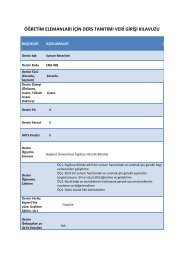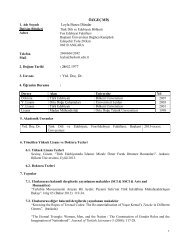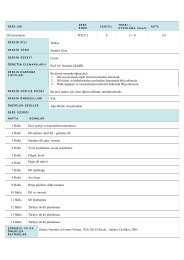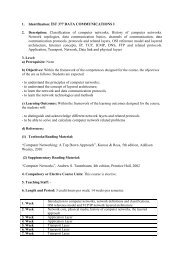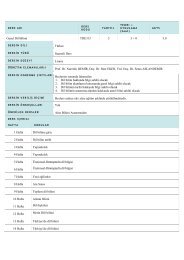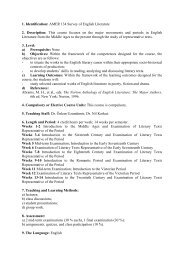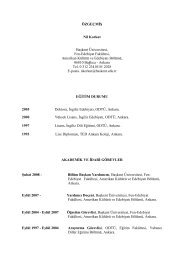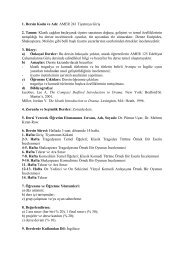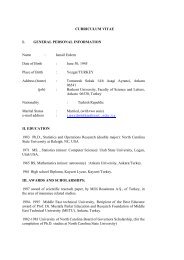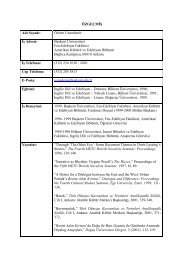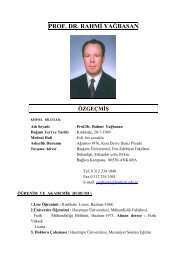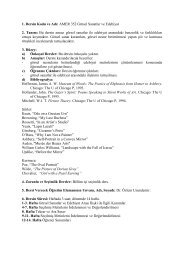Turkish-Armenian Intermarriages in Bulgaria Svetlina Denova, Ph.D ...
Turkish-Armenian Intermarriages in Bulgaria Svetlina Denova, Ph.D ...
Turkish-Armenian Intermarriages in Bulgaria Svetlina Denova, Ph.D ...
You also want an ePaper? Increase the reach of your titles
YUMPU automatically turns print PDFs into web optimized ePapers that Google loves.
second case aga<strong>in</strong> the wife’s parents were aga<strong>in</strong>st the marriage. The connections between thewife and her family broke off and they were re-established <strong>in</strong> two or three months, when thenews of her pregnancy was told to the parents. After this critical period of disconnection withparents and relatives, <strong>in</strong> the first case for years, <strong>in</strong> the second for months, the connections arere-established. The appearance of the child <strong>in</strong> both cases is the strongest motive for this.It is typical for the two families to celebrate the festivals of the two communities.Easter, Christmas and Kurban Bayram and Ramadan Bayram are always celebrated. I wassurprised to see the unique balance between the Christian and Muslim celebrations. Commonfestival for the two families is New Year’s Eve. For the <strong>Turkish</strong> celebrations – the twoBayrams, the family usually goes to its <strong>Turkish</strong> relatives <strong>in</strong> the village.What happens with the name of the child? In the first case the daughter is named afterthe name of the mother-<strong>in</strong>-law (the husband’s mother). It is a tradition for both <strong>Armenian</strong>sand Turks to name the child after the husband’s parents. Such is also the case here. In thesecond case the daughter is named after the father-<strong>in</strong>-law (the wife’s father). This can beexpla<strong>in</strong>ed with the fact that for the period of the pregnancy the family had lived together withwife’s parents.The language of the two families is <strong>Bulgaria</strong>n. But <strong>in</strong> the two cases it is mentionedthat the older relatives of the <strong>Armenian</strong> husband or wife can speak <strong>Turkish</strong>. The child <strong>in</strong> thefirst case doesn’t know <strong>Turkish</strong> but she goes to <strong>Armenian</strong> school and can “read, write andtranslate <strong>Armenian</strong>”. It is <strong>in</strong>terest<strong>in</strong>g however that although the daughter has certa<strong>in</strong>knowledge of <strong>Armenian</strong>, she actually cannot speak it. The language of the family is<strong>Bulgaria</strong>n. That’s the language of the husband’s parents, too. <strong>Turkish</strong> and <strong>Armenian</strong> speakonly the great-grandparents of the child. In the second case the child goes to a k<strong>in</strong>dergartenwhere there are special hours once a week <strong>in</strong> <strong>Armenian</strong>. But the child knows just a few words<strong>in</strong> <strong>Armenian</strong>. The language of the family is aga<strong>in</strong> <strong>Bulgaria</strong>n. The old husband’s relatives



